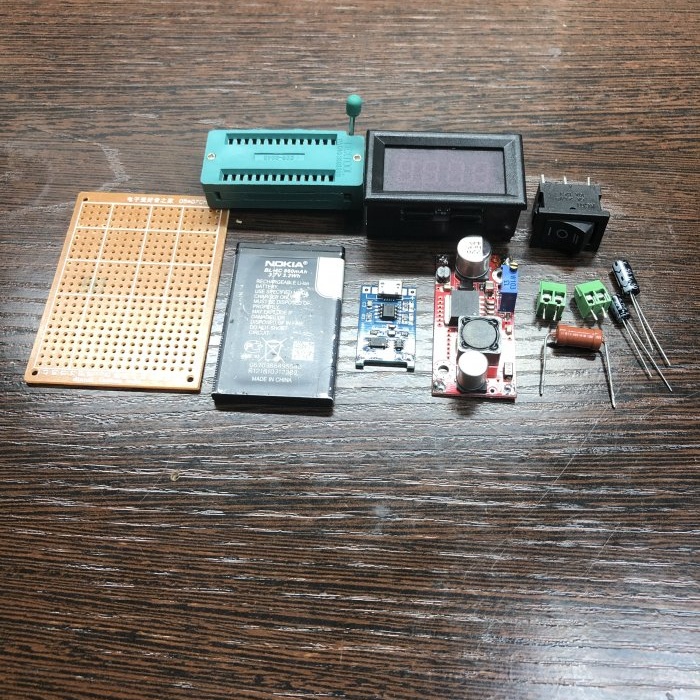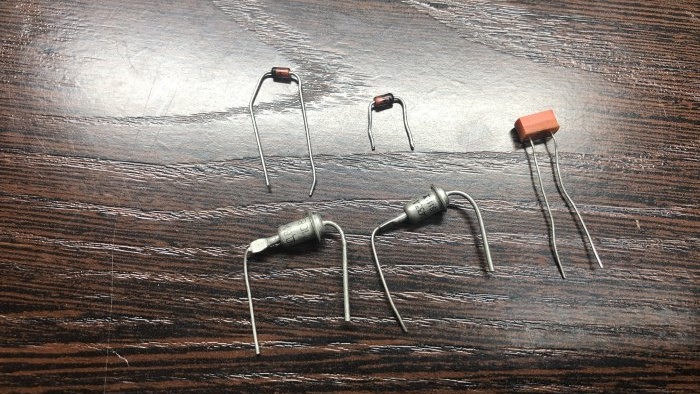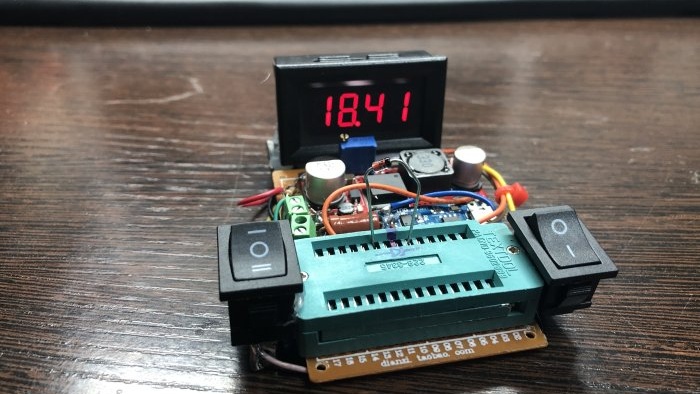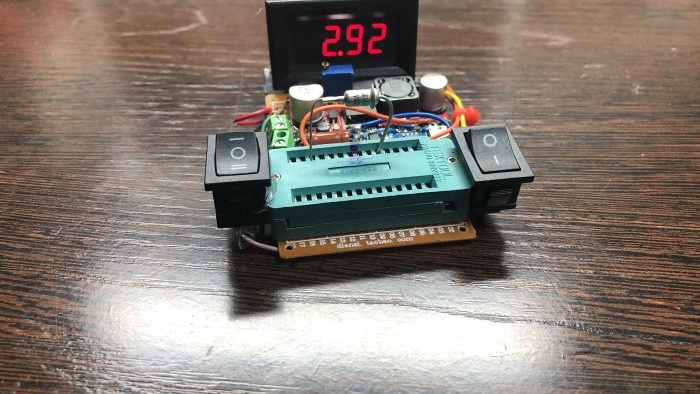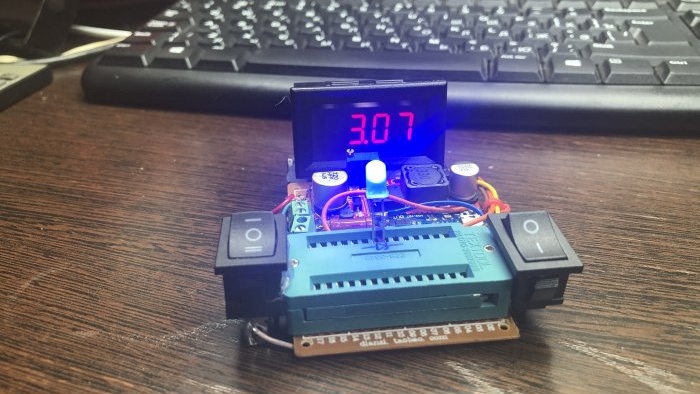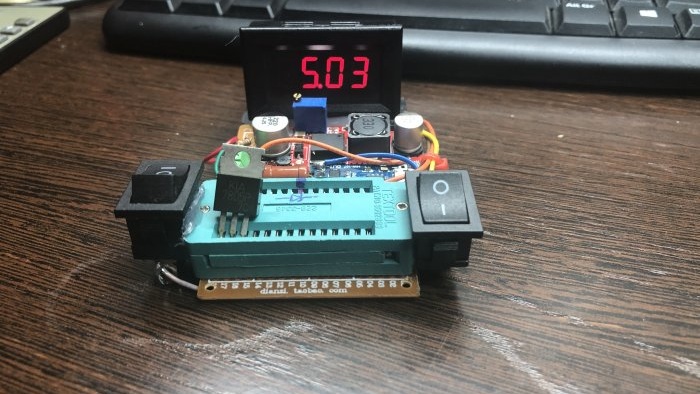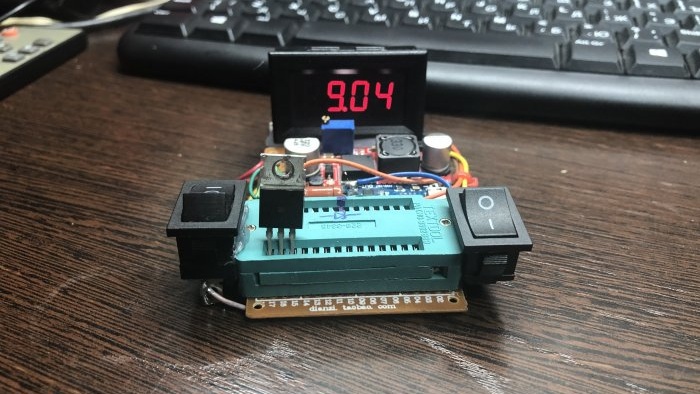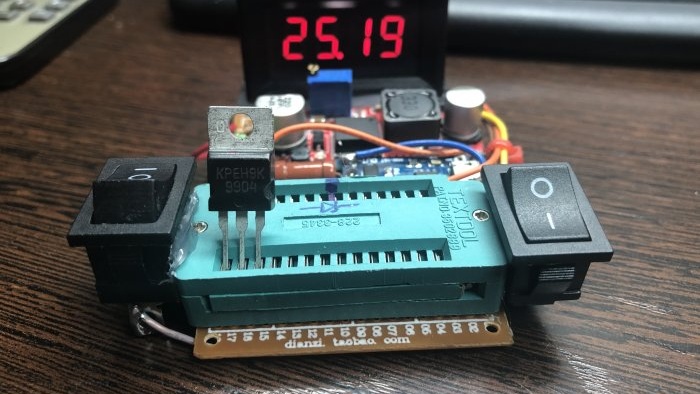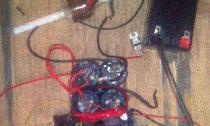Due to the advent of small-sized, cheap voltmeters in our time, it has become possible to independently manufacture various instruments, devices, probes in order to monitor different quantities. Based on such a voltmeter, you can independently make a device that will test both zener diodes for rated stabilization voltage and integrated voltage stabilizers with a fixed output voltage. You can also check LEDs for serviceability.
The circuit of this device is quite simple, and consists mainly of ready-made voltmeter modules that can measure voltage up to 30 volts as in my case, a step-up DC DC converter, a LI-ion battery from an old cell phone, three clamp block resistors and a couple of switches.
Will need
- Charge controller TP4056 -
- XL6009 boost converter -
- Built-in voltmeter -
- 18650 battery -
- Quick connection socket -
Device diagram:
At the input there is a power source consisting of a LI-ion battery from a cell phone with an operating voltage of 3.7 volts with a charging board on TP4056, you can also install an 18650 battery. Next, the voltage is supplied to the input of the step-up DC-DC converter and rises to 30 volts from the converter voltage is already supplied to the device circuit.
Resistor R1 serves to power the voltmeter; I selected it in such a way that the power supply to the voltmeter was about 12-14 volts. It is advisable to install a current limiting resistor R2 and R3 more powerful than 1-2 watts. Switch S1 is used to turn the device on and off, it is placed in an open circuit directly in front of the converter so that during idle time it does not consume excess energy from the battery, switch S2 is used to switch the type of work mode, the first is for checking zener diodes and LEDs the second is for integrated circuits. Please note that the voltmeter has three wires: red, yellow and black; the diagram shows the correct connection. It is not necessary to install just such a digital one; you can get by with any pointer voltmeter with a constant voltage of 30 volts, then the need for power disappears and the section of the circuit with resistor R1 can be excluded from the circuit.
Now let's see how this tester works:
Let's take several Soviet and imported zener diodes, insert them into the block according to the diagram and look at the results. The voltmeter will show us what stabilization voltage the zener diode is designed for.
Next, let's check a few LEDs, to check we use the same mode and the voltmeter will show us the voltage drop across the diode and accordingly we will see that Light-emitting diode shines properly.
Now let's check the integrated circuits in my stocks, there are both imported and USSR ones. We insert the first three contacts of the microcircuit under test into the lower row of contacts of the clamping block. We switch the operating mode and the voltmeter will show us what fixed voltage the microcircuit is designed for.
The device is mounted on a breadboard, all modules are fixed with thermal adhesive. As a result, we received a three-in-one device that will always be at hand, is not large in size, does not require adjustment, and does not contain expensive or scarce components. It will be especially useful for those who often build or repair power supplies or voltage stabilizers.

